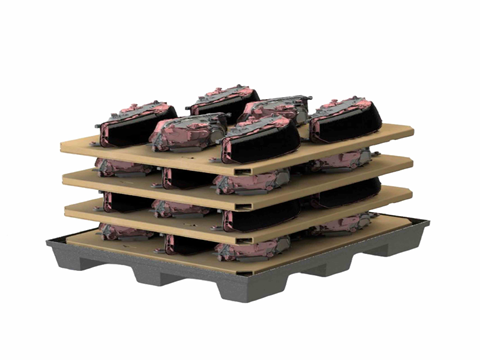
DS Smith Tecnicarton has designed single-use corrugated cardboard trays to replace expanded polypropylene alternatives when transporting automotive products such as headlights.
A double fingerprint die cut has been implemented to account for heavy yet delicate automotive headlights, securing them in place from the top and bottom of the pack. This is set to support and protect the product against damage, whether in transit or storage.
Furthermore, the trays are intended to be easily stackable and optimize storage space. Their lateral design feature can be ‘flexibly integrated’ into larger packaging of any size, DS Smith explains, which enables customers to position a maximum number of product pieces.
Additionally, the trays are designed to serve as a substitute for returnable plastic packaging in emergencies or return flow failures, which may include vehicle malfunctions, software glitches, component failures, and manufacturing or supply chain disruptions resulting from natural disasters or global events.
“Our Tecnicarton Corrugated Cardboard Trays can be manufactured quickly and with the same requirements and protection conditions as their traditional plastic counterpart,” explains Antonio Cebrián, commercial director at DS Smith Tecnicartion. “We offer our customers a flexible and economic packaging solution with a low tooling cost and the product is available for use in transportation and logistics operations worldwide for customers in the automotive sector.
“We are committed to helping our customers in reaching their sustainability and circular economy targets.”
Earlier this year, DS Smith unveiled TailorTemp, a temperature-controlled packaging solution made of corrugated cardboard. Intended to replace expanded polystyrene, it combines recyclability with a 36-hour cooling period and a parametric algorithm to unlock customizability.
Since then, Myco has taken steps to replace polystyrene with a composite material made from mushroom mycelium, a network of fungal fibres, and organic waste such as sawdust, hemp shavings, and paper. It is designed to biodegrade in the natural environment while matching the performance of conventional solutions.
If you liked this story, you might also enjoy:
The ultimate guide to the Packaging and Packaging Waste Regulation in 2025
How are the top brands progressing on packaging sustainability?
Everything you need to know about global packaging sustainability regulation in 2025
The key to increasing the use of reusable packaging in supermarkets

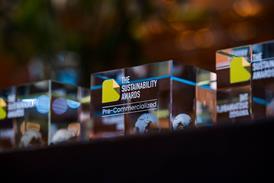

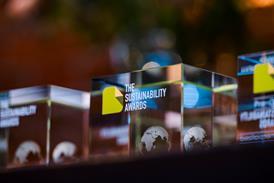
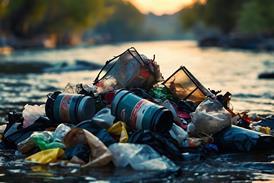
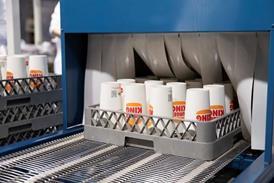






No comments yet